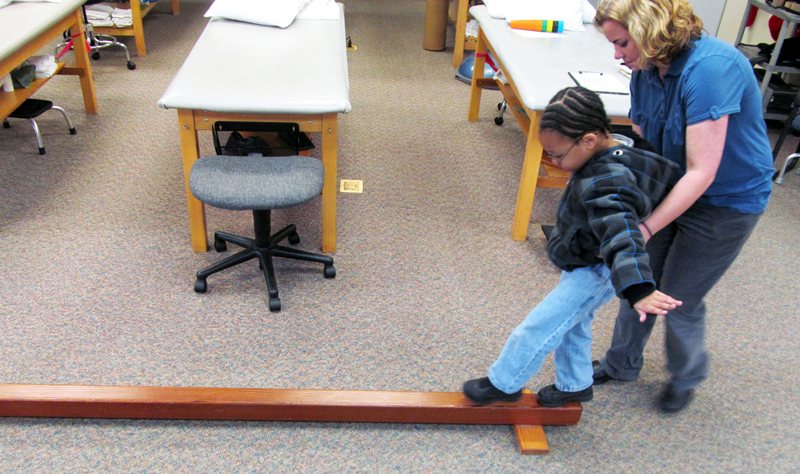April is National Autism Awareness Month and medical and social treatment providers are spreading the word of how to help children who toe walk.
Written by Stephanie Heinatz
—
Walk into the Tidewater Physical Therapy Hidenwood clinic in Newport News, Va. on any afternoon when Leslie Proctor is working with children and you might not realize they are in therapy.
Children shoot hoops, play on the Wii video game system, jump on trampolines and scoot around picking up colored cones.
“I want them to have fun in therapy,” says Proctor, who earned her Doctorate in Physical Therapy from the Medical College of Virginia in Richmond and specializes in working with patients of all ages, especially children. “All patients have a job they perform, whether it is at the workplace or household chores. A child’s job is to play— and it is part of my role to help them keep up with their peers.”
What the children don’t often realize is that those games help them work on strength, balance and mobility.
This month, during National Autism Awareness Month, Proctor is among the community of providers and support networks helping educate the public on how these therapies help aid children who toe walk, live with autism, Asperger’s Syndrome, cerebral palsy, or other neurological development delays.
Autism is a complex developmental disability that typically appears in children in their first three years and affects them in varying degrees, according to The Autism Society.
It’s also a disorder on the rise, The Autism Society explains, citing that “in March 2012, the Centers for Disease Control and Prevention…concluded that the prevalence of autism had risen to one in every 88 births in the United States and almost one in 54 boys.”
Toe walking—when children walk on the balls of their feet as opposed to the standard heel-to-toe gait—is one physical way the disorder can manifest in children.
The why is still largely unknown, according to Sydney Mrowiec, Executive Director of the Peninsula School for Autism in Newport News.
But if it appears in toddlers, the Mayo Clinic recommends parents call their family physician.
“If the toe walking is associated with cerebral palsy, autism or other problems, treatment focuses on the underlying conditions,” according to the Mayo Clinic.
Treating children with autism who toe walk could include introducing behavioral modification strategies.
“Toe walking…can be managed with child self-management skills— which is where we come into play (at the school),” Mrowiec says. “But if there are physical limitations, that’s where we need to collaborate.”
That collaboration could be with Proctor at Tidewater Physical Therapy, or other clinicians.
“We take a collaborative approach,” Mrowiec says of the school, founded in 2009. “Part of our mission is to build a team that goes beyond our scope of services.”
There are a variety of physical therapy techniques that can be used to discourage toe walking, Proctor says of the work she does in her clinic.
Treatments range from hands on techniques such as stretching, taping, and massage to balance activities on different surfaces or electrical stimulation to re-educate muscles.
To keep the children engaged, those very techniques often feel like play, Proctor explains.
And eventually, Proctor gets to watch the children walk out on flat feet, “or even with heel strike.”
That’s the goal.
“Every parent,” Mrowiec says, “wants their children to fit in and stand out less in the community. Autism has such a wide range of characteristics that it takes a village, a team, to properly treat.”

